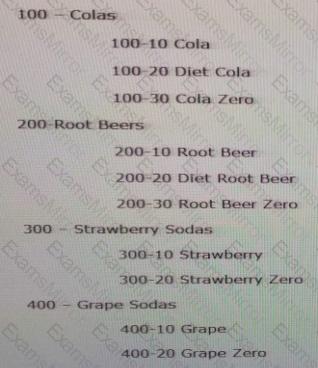Big Halloween Sale Limited Time 70% Discount Offer - Ends in 0d 00h 00m 00s - Coupon code = simple70
Pass the Oracle Data Relationship Management 1z0-588 Questions and answers with ExamsMirror
Exam 1z0-588 Premium Access
View all detail and faqs for the 1z0-588 exam
574 Students Passed
84% Average Score
98% Same Questions
Which API method is used to check the status of an asynchronous operation executed via the DRM web service?
Identify three ways to narrow the scope of the first phase of the DRM implementation.
How can downstream systems receive exported data from DRM?
1. Database query
2. Export
3. Export Book
4. API
5. DRM Migration utility
Identify the three true statements about version types.
What are three functions that can be performed by the Data Creator role?
Per the following example:
All Products

A user is assigned to two node access group, G_Colas and G_Diet Cola. G_Colas is assigned Add permission for the Colas node in the product hierarchy and the G_Diet Cola group is assigned I dit permission for the Diet Cola node.
He is assigned the Interactive User role. Identify the three true statements.
Your budget office is preparing the Entity dimension for the upcoming year with organisation changes. They are working in a version called '"Budget". This version has a Working status until the Entity hierarchy is finalized. The budget office user has received new information from management that requires him to back out the numerous changes he has made over the last five days. The AllowAsOf system preference is set to True. What is the next step?
Select the four valid reasons why you would create a different version.
You want an import to stop if a duplicate node is found. How do you do this?
"Primary" and "LE_Restructure" are both versions in your DRM application and both have a hierarchy named "Legal Entity".
The nodes and structure of each hierarchy are as follows:

Select the nodes that would be included in a Structure Compare for Differences.
TOP CODES
Top selling exam codes in the certification world, popular, in demand and updated to help you pass on the first try.
